
CONTACT US:
425-236-6777

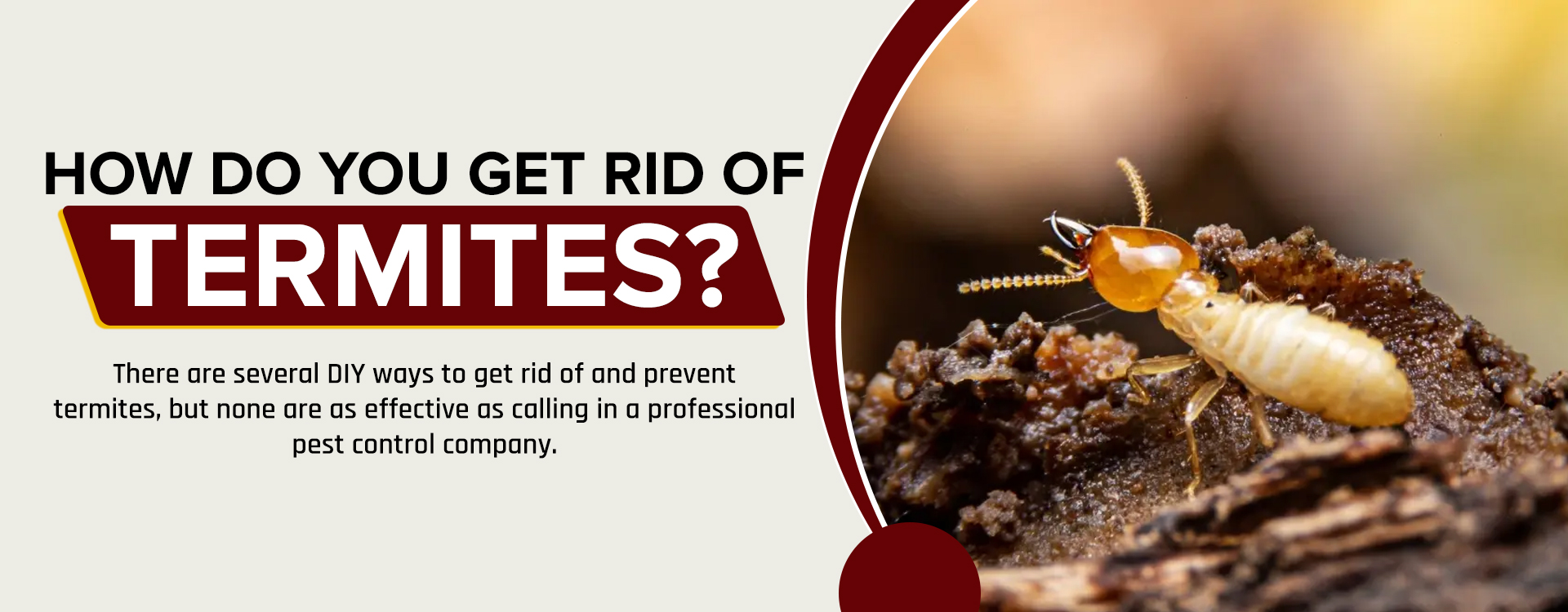
If you suspect you have termites in your home, it’s important to take action quickly. Telltale signs like hollow-sounding wood and mud tubes will let you know they’re taking over. It pays to be vigilant, because termites can do a lot of damage before you even realize they’re there. Homeowners across the country spend $5 billion a year on termite control and repair, according to the pest control company Orkin.
The best way to get rid of termites is to call in a professional pest control company. Even the savviest homeowner can’t compete with a trained technician’s experience, knowledge, and commercial-grade products and equipment.
How Do You Get Rid Of Termites?
Some of the best ways to get rid of termites is to apply termite-killing products to your home’s exterior, use direct chemicals on the inside of your home, set up termite baits, and spray boric acid in your floors and walls.
If you’re committed to taking on a termite infestation yourself, there are many methods you can practice, from traditional chemical killers to organic options.
Getting Rid of Subterranean Termites
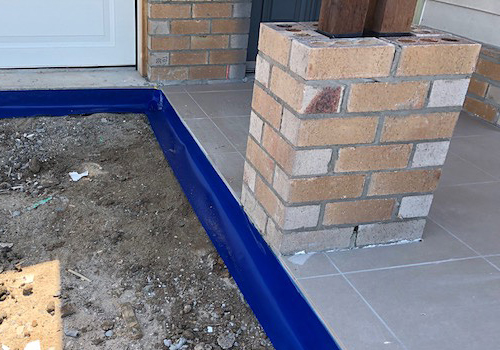
Termiticide Barriers:
Depending on which state you live in, you may be able to purchase some professional-level termite-killing products like liquid Taurus SC and Termidor SC. You apply these conventional termite treatments to your home’s exterior perimeter to create a barrier. Termites are unable to detect the termiticide, so they don’t try to avoid it. When a termite eats materials treated with termiticide, it will die. Termiticide also works by spreading like a virus. When one termite comes into contact with the termiticide, it will unknowingly carry it around, infecting other termites and ultimately killing the colony.
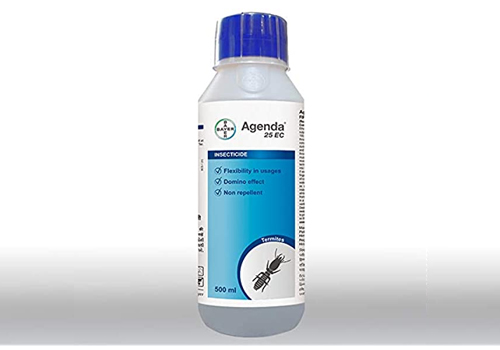
Direct Chemicals:
Direct chemicals, unlike termiticides, can actually be used inside of your home itself. If you spot a termite and want to dispatch it immediately, this is the technique for you. Shoot Termidor Foam directly into cracks, voids, and crevices that make for great termite hiding places. The odorless foam will expand, then evaporate, leaving behind a residue that poisons termites as soon as they touch it. This method lasts for a month or slightly longer.
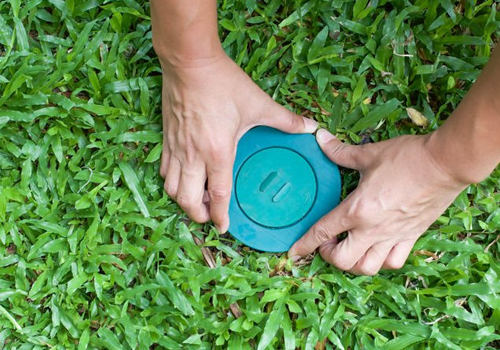
Termite Baits:
Termite baits are a proven method. These baits, installed around the perimeter of your home’s foundation, attract foraging termites to the poison within. The slow-acting toxin interrupts termites’ natural growth, killing them as they try to molt. Because of the toxin’s delayed action, the infected termites will bring the insecticide back to the colony and transmit it to other termites.
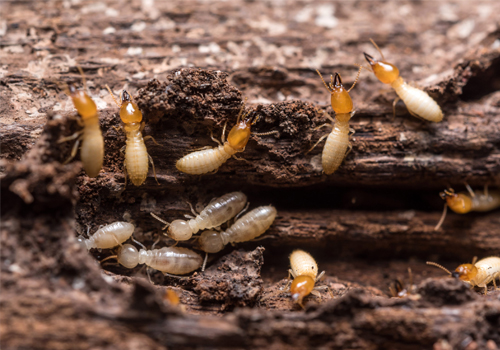
Beneficial Nematodes:
These microscopic, segmented roundworms are natural parasites to many garden pests—including termites. Beneficial nematodes burrow into their host and release a symbiotic gut bacteria that poisons the termite’s blood, killing them within a matter of days. You can find beneficial nematodes online or in stores. Apply a mixture of nematodes, potting soil, and cold water to the infested areas of your lawn and garden.
Getting Rid of Drywood Termites
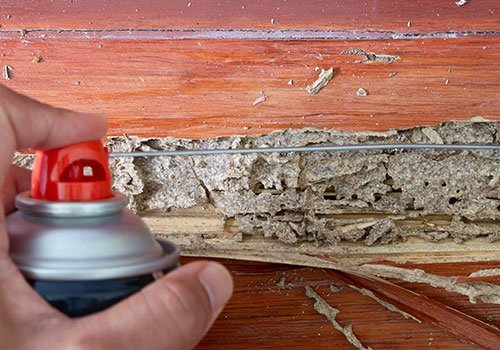
Spot Treatmeant:
If you’re dealing with painted or finished wood, you can drill and fill holes to combat drywood termites. First, you need to drill holes about every 10 inches into the termite-infested wood. You will feel resistance once you hit the nest. Then, fill the holes with termiticide. To finish up, use a putty or wood patch to close up the holes.

Essential Oils:
Orange oil and neem oil can kill termites slowly over time by inhibiting their ability to shed their skin or lay eggs. Just mix two cups of water with a couple drops of dish soap and about 10 drops of your chosen oil. Shake it up and spray it on infested wood and materials.
Getting Rid of Subterranean and Drywood Termites
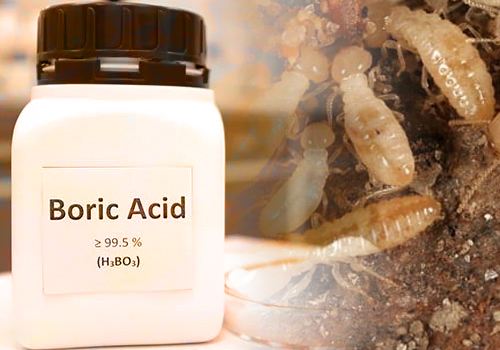
Boric Acid:
Boric acid is a tried-and-true method for killing termites. Many of the termite insecticides you can find at the store use the highly effective boric acid as the main ingredient. Boric acid works by dehydrating the termite and shutting down its nervous system. Simply spray cracks and crevices in floors, walls, and ceilings evenly with the acid.
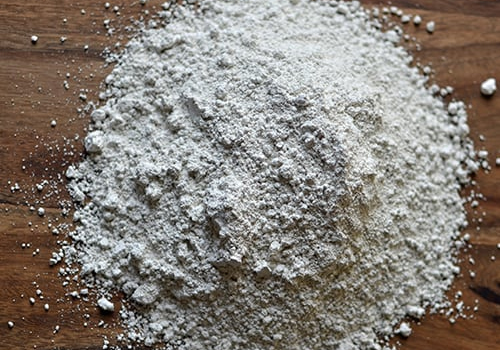
Diatomaceous earth:
This method kills termites by penetrating their exoskeleton and dehydrating them. Diatomaceous earth is made up of fossilized aquatic organisms whose exoskeletons are made up of silica. Just sprinkle the powder around areas where you suspect termites, and wait for them to crawl over it.
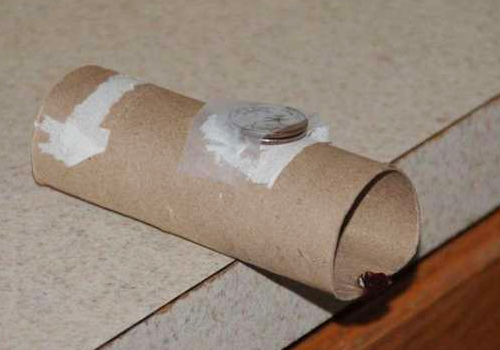
Cardboard trap:
Once you’ve identified the source of your termite infestation, wet two pieces of cardboard and stack them on top of each other to make a kind of DIY bait. The cellulose in the cardboard will attract the termites, and the pests will get caught between the two pieces. Then, you can take the cardboard outside and burn it. This is not a very effective method, since there’s no guarantee it will trap all of the termites, which can reproduce very quickly. Also, maintenance is key—if too many dead termite bodies stack up, that will deter future termites from crawling to the cardboard.
What Are The Different Types of Termites?
The two primary types of termites you’ll come across in the U.S. are subterranean termites and drywood termites. It’s important to identify which type you are dealing with, because they may require different treatment methods. While you can create poisonous barriers against subterranean termites, you’ll need to spot treat or get fumigation services for drywood termites.
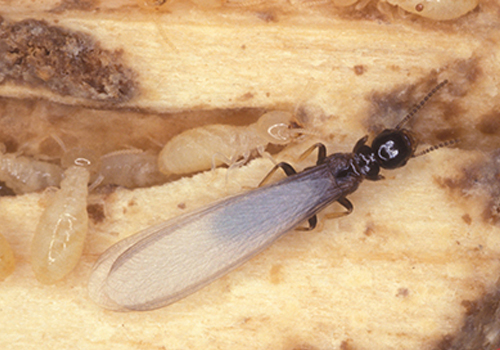
Subterranean termites:
Subterranean termites live in both your foundational wood, soil, and any compost piles around your home. They create mud tubes, or highways out of wood and soil, to travel in your home. This termite type generally does more damage than drywood termites do, because of their saw-toothed jaws. Given the time, subterranean termites can completely collapse a building. According to Orkin, subterranean termites are responsible for 95 percent of the termite damage in the U.S. Subterranean termites can be found across the country.
Subterranean termites are ⅛-⅜ inch long, and are narrow in shape. Their color depends on their “caste.” Workers are a pale cream color, while soldiers share that body color but have brown heads. Reproductive termites come in two types and colors. Primary reproductives are black or brown, and supplementary reproductives are creamy white. Subterranean termite colonies can become huge, ranging from 100,000 to even 1 million termites.
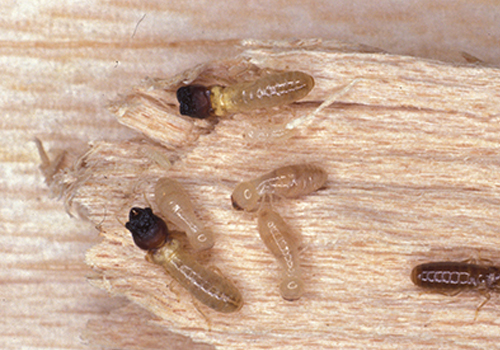
Drywood termites:
While subterranean termites require contact with soil in order to live, drywood termites can live exclusively in wood. They do not create mud tubes to travel, and they are usually only found along the warm coastal regions. Drywood termites range in size from ⅛-½ inches and range in color. The termites that directly damage the woods are white, like subterranean termites. The winged drywood termites span the color spectrum from yellow-tan to light brown. Drywood termite colonies can hold up to 2,500 members.
How to Identify a Termite Infestation
Before we dive into techniques to rid your home of termites, let’s break down the ways to identify a termite infestation. Unfortunately, it’s not as easy as seeing a termite skittering down your wood grain. Start by checking your attic, all of your home’s cracks and joints, and fuse boxes. Here are some types of evidence that your home’s foundation is under attack.
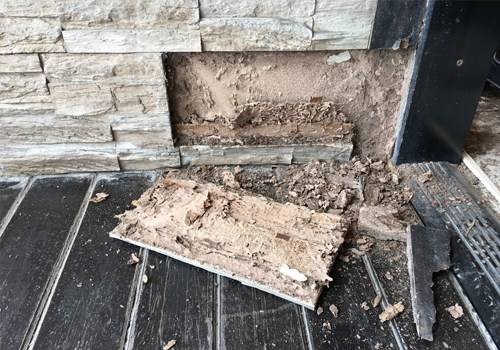
Hollow wood:
If you knock or tap on your wood and hear a soft thud or hollow sound, it’s pretty clear you have termites. You can use a screwdriver to further test your wood. If you press the screwdriver into your wood and it gives easily, that’s not a good sign.
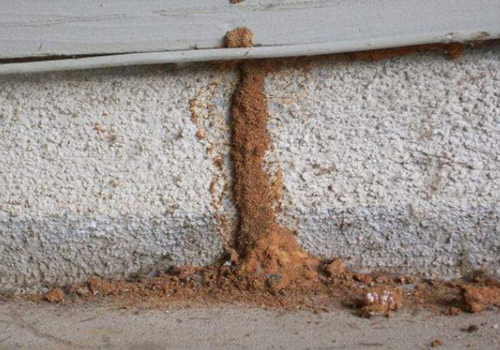
Mud tubes:
Subterranean termites create their own “highways” out of tubes of mud to connect the wood they eat to soil. These mud tubes, made up of wood and soil, are about as wide as a pencil. Spotting them means you have termites, but their absence doesn’t mean you’re home-free. The subterranean termites may not have made them yet, and drywood termites don’t make mud tubes, so those might be on your hands.
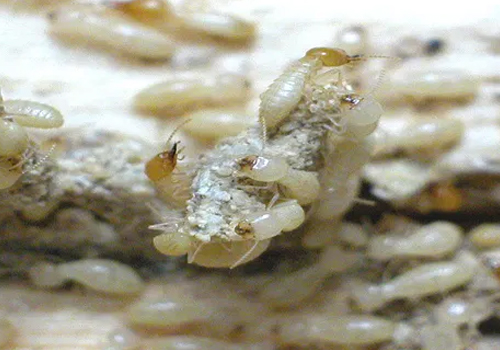
Head banging:
You may hear a strange clicking sound coming from inside of your walls. That’s because when soldier termites detect a threat, they signal danger to other termites by banging their heads against the wood and shaking their bodies.
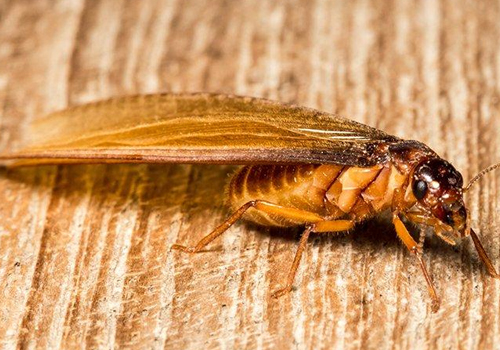
Swarm evidence:
When subterranean termites set off to create a new colony, they shed their wings, often in piles. If you see a bunch of scattered wings, they could be from termites.
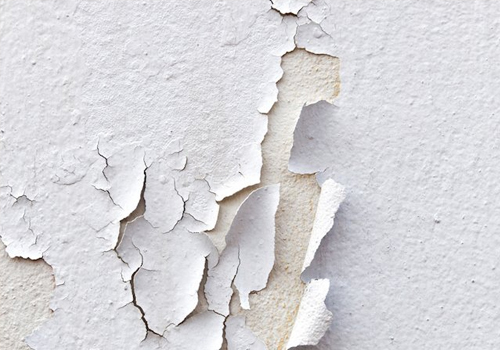
Peeling paint:
When termites damage drywall, they let moisture enter the space between the surface and the paint, causing paint to bubble or peel. There are other reasons your paint may buckle, but if you note this in tandem with other signs, you may have a termite infestation.
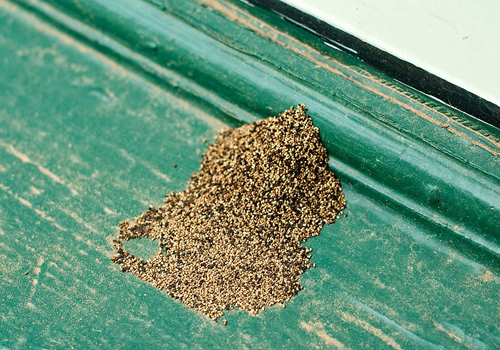
Frass:
If you see small, granular, oval pellets on your door frames, baseboards, and windowsills, they may be frass, or termite droppings.
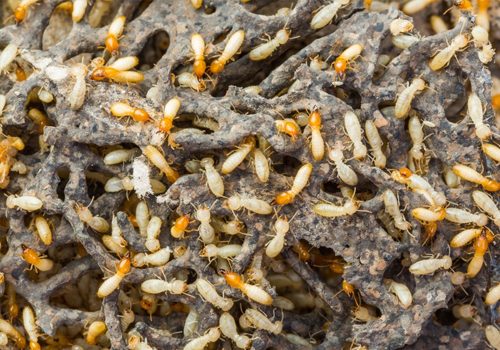
Seeing live termites:
It is possible that you may come across some live termites. It’s important to distinguish them from flying ants so that you know what you’re dealing with. Termites’ rear wings are even in size, their abdomens are thick, and their antennae are straight. On the flip side, flying ants have wings of different size, are thinner through the middle, and have bent antennae.
How to Prevent Termites
There are several ways you can make your home less appealing—or unavailable—to termites. Here are the top methods.
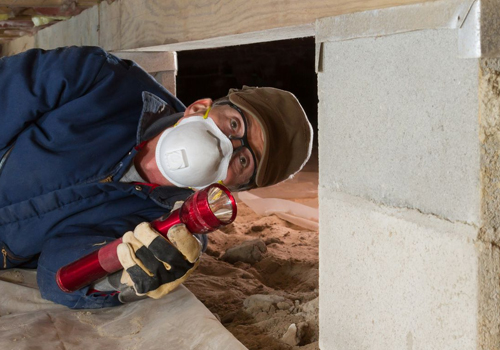
1) Check for leaks:
Subterranean termites can’t live without moisture. Keep your home dry to keep them at bay, especially your roof and air conditioner.
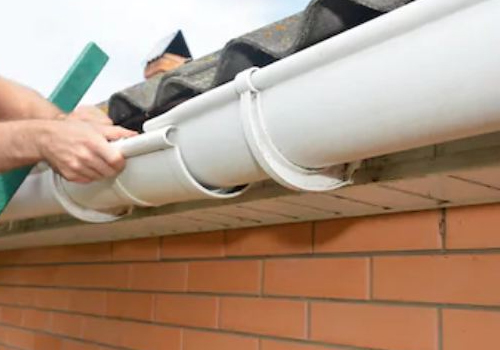
2) Clean gutters and pipes:
Termites love to hide in warm, dark, moist places. Clean out gutters and pipes often to prevent termites from settling in.
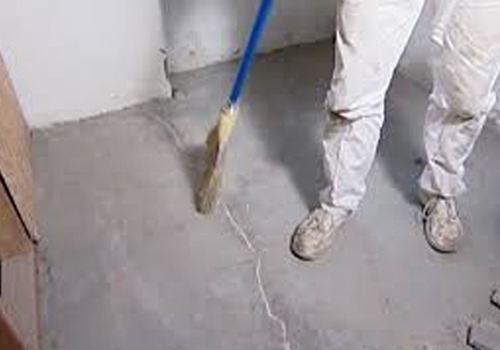
3) Fill in cracks and crevices:
Caulk and seal any unnecessary openings in your foundation where pipes meet the wall, and be sure to seal off windows and doors.
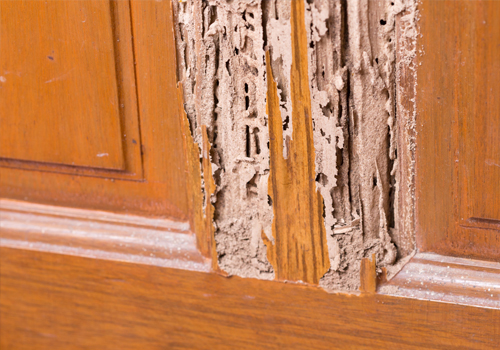
4) Watch out for wood:
Termites are attracted to the cellulose in wood, so it’s vital that you don’t stack firewood against your house or leave tree stumps in your yard. When building your house, always make sure to leave at least 6 inches between your porch, deck, or patio, and the ground, and use termite-resistant wood whenever possible.
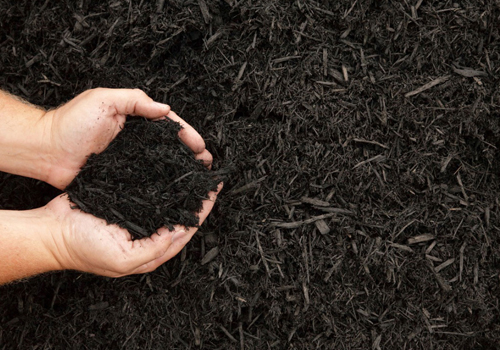
5) Be careful with mulch:
Subterranean termites need soil, and certain types of mulch contain wood. Opt for mulch made up of materials like rubber or gravel instead.
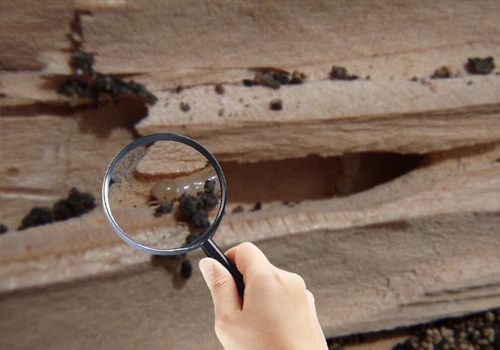
6) Get regular inspections:
Of course, the best prevention method is regular termite inspections by a professional pest control company.
Professional Pest Control Services
If you suspect you have termites of either variety, call a professional pest control company to investigate. These tenacious pests can destroy the foundation of your home quickly. The DIY methods may help slightly in the short term, but they’re no match for professional equipment, products, and expertise.
If you hire an experienced, reputable pest control company, they will know exactly how to find entry points, identify colonies, and create a treatment plan. Most pest control companies use a multi-pronged approach, depending on your home’s specific needs.
If you have any questions or comments, email me
at [email protected] and those questions are answered within 30 minutes.
OR if you would like more information on Our Proven Unique Systems and Programs , call us
at 206-391-7766 or visit our website www.GeorgeMoorhead.com
For FREE Online Home Evaluation,
please complete the form below
Looking for Investment Properties?
Let us know what you need

©2021. All rights reserved
GEORGE MOORHEAD - Bentley Properties
[email protected]
Direct: 206-391-7766
14205 SE 36th St., Suite 100, Bellevue WA 98006
19125 North Creek Pkwy #120, Bothell 98011
Office: 425-747-1901
www.GeorgeMoorhead.com

